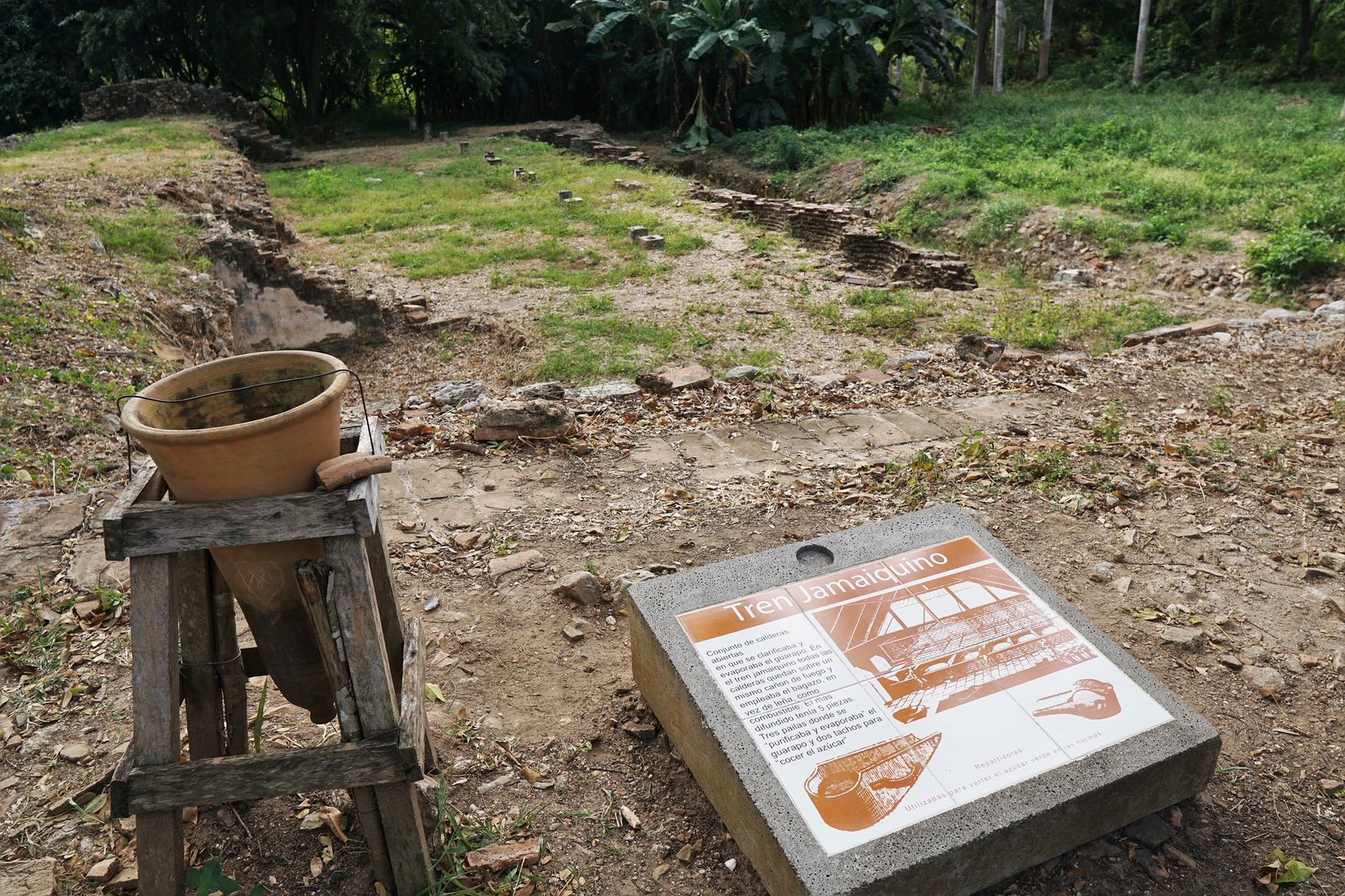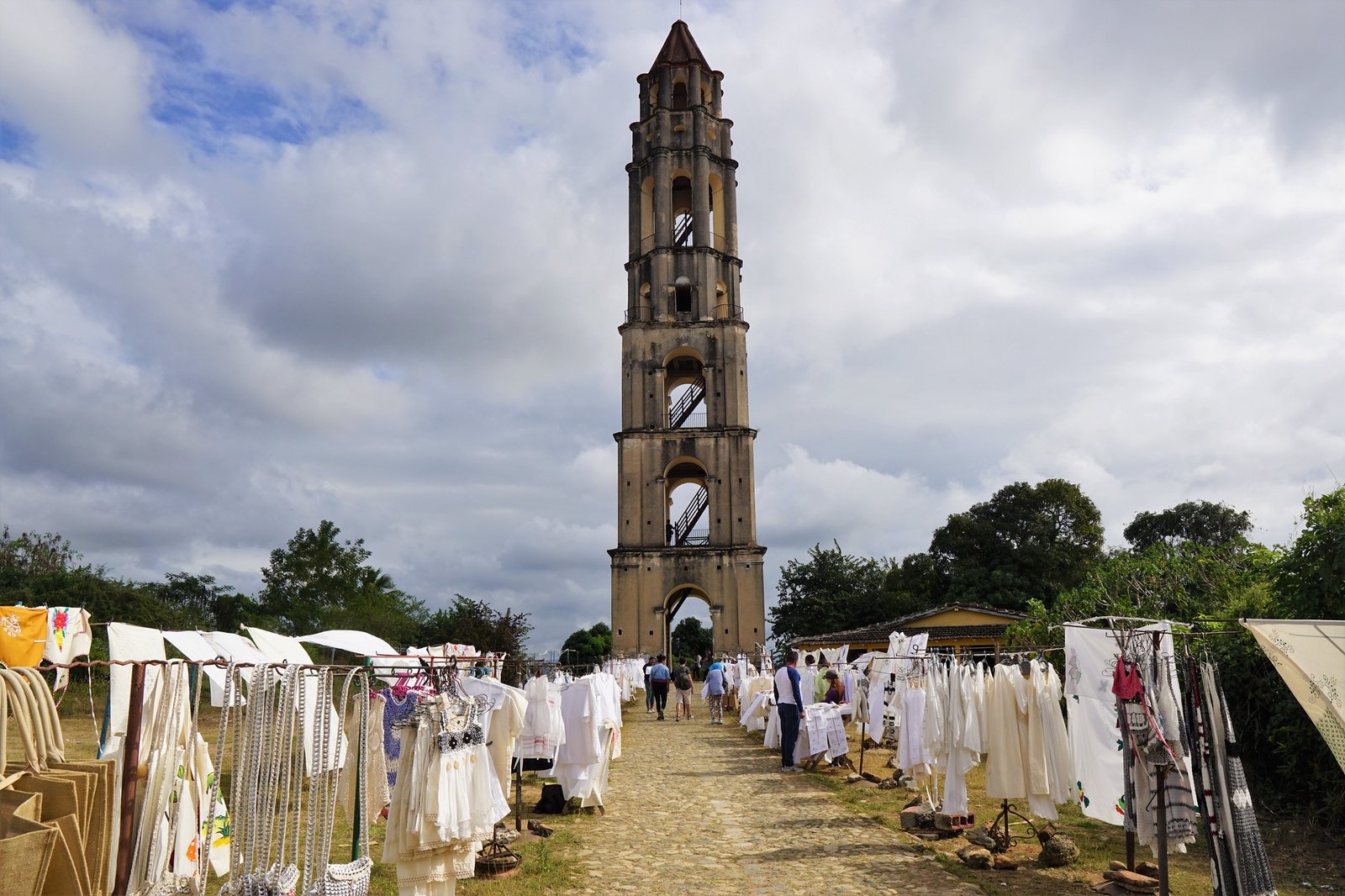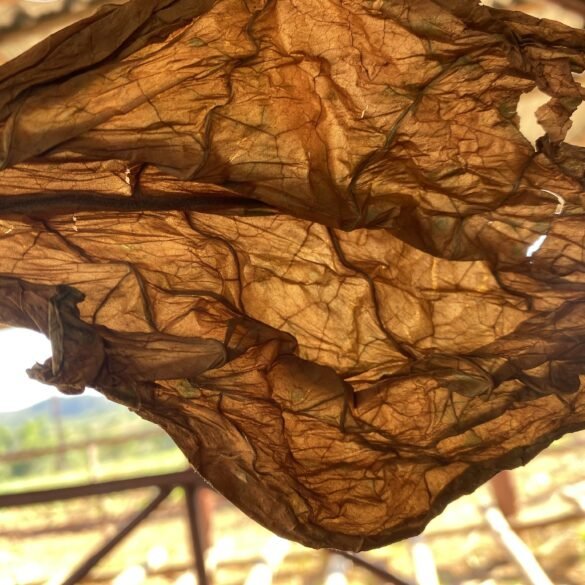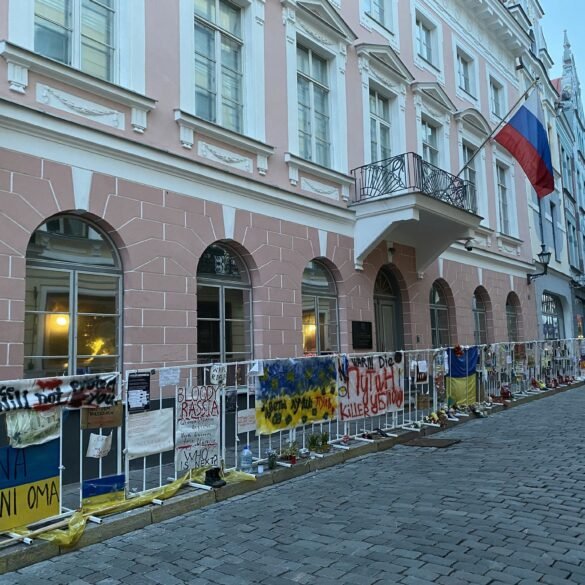Tobacco and sugar. Two exports, in addition to rum, that Cuba is most known for. After spending three days in the tobacco-growing province of Piñar del Rio, which included visiting a tobacco farm and learning about the cigar-making process in Viñales, it was time for us to explore the region that was once dominated by sugar production. On our travel day, we took a punishing 8-hour ride in a crammed colectivo halfway across the island to the town of Trinidad.
Nowadays, Trinidad is a touristy town, known for its well-preserved, beautiful colonial center hosting great restaurants and musical venues. And it was the sugar money with which this colonial jewel was built. The nearby Valle de Ingenious (Valley of the Sugar Mills) was a premier sugar cane growing area that at one time was home to more than 50 sugar mills. Given its historical importance, the valley together with Trinidad has been recognized as a UNESCO World Heritage Site.
Trinidad’s colonial heart unabashedly showcases the riches of the former sugar industry. Plaza Mayor is dominated by an imposing two-story Palacio Brunet that once belonged to the Borrell family - one of the wealthiest sugar magnates of the day. The neighboring Palacio Cantero and other colonial buildings similarly exhibit what could be bought and built with the “white gold” money back in the day. For a couple of days in Trinidad, we roamed the cobblestone streets, got inside colonial mansions, and enjoyed the views from various towers and viewpoints.

After seeing everything in town, we decided to visit the place where all these fortunes were made. During our last day in Trinidad, our Airbnb host arranged for us a taxi to visit the Valley of the Sugar Mills. The driver came to pick us up in the morning in an eggplant-colored 1988 Moskvich, and off we went.
Leaving Trinidad, our first stop was a mirador (a viewpoint) overlooking the valley. The bird-eye view was breathtaking with the valley majestically spreading in front of us. The greenery of the valley extended in all directions. We stood there, gazing at the beautiful hills surrounding us, and imagined the valley in the 18th century filled with sugar cane plantations and working sugar mills.

We then drove into the valley and soon exited the main road to take a dirt road to a former sugar mill. San Isidro was one of the many sugar mills back in the day, and what is left of it today is just the ruins that are being restored and developed into a tourist site. The site has the remnants of the owner’s house, production facilities, slaves’ living quarters, and a watchtower, from which slaves were observed working in the fields. The entrance payment included a 40-minute guided tour, which we enjoyed very much. A young guide walked us through this small-scale sugar mill and provided an excellent overview of the history and the process of sugar production in Cuba.
The guide started by explaining that in the 16th century, the Spanish introduced sugar cane in Cuba, and it turned out that the country had excellent climate conditions for growing the plant. The easy access to ports and therefore international markets proved to be critical, allowing Cuba at one point to become the world’s leading producer of sugar. Because the native Taino population was quickly eradicated due to violence, genocide, and diseases brought by the Europeans, thousands of slaves were subsequently brought to Cuba from Africa to work in sugar cane fields and mills.
The guide then went on to explain the different stages of producing sugar. Those slaves who worked in the fields harvested sugar cane by cutting it with a machete under the scorching Cuban sun. The sugar cane was then delivered to the mill, where the juice was extracted from the plant and refined through a series of boiling and filtering processes. The final stage, crystallization, involved pouring the sugar syrup into an upside-down cone form and then draining water through it, washing out the contaminations. The final product took the form of a crystalized conical loaf with the best sugar located at the bottom of the cone and the tip containing all the impurities. These sugar cone tips were usually unsuited for markets and were often fed to slaves, whose well-being was hardly important. The guide described in detail the inhumane conditions in which slaves existed at these sugar plantations. Slaves were mistreated and lasted on average 6-7 years before they died and were replaced. To numb their pain and not notice the abysmal living conditions and mistreatment, slaves often began their workday by drinking cheap rum that was produced from byproducts of sugar production. The foreman slave, who was vital for the efficient, uninterrupted production of sugar, normally got a slightly better life and was even allowed to have a family that lived with him on the premises of the plantation.
Slavery in Cuba was abolished in 1886 but, as our guide explained, not because of humanistic reasons. At the end of the 19th century, slavery was no longer lucrative due to the Industrial Revolution and new technological advances, as well as because of regular rebellions by slaves and the growing use of cheaper beet sugar in Europe. Eventually, sugar production in Cuba went into decline, and many sugar mills, like San Isidro, were abandoned.


Our last stop in the valley was Manaca Iznaga, a small village dominated by a tall and imposing tower. As we pulled up to the village’s entrance, there was a line of locals getting their bottles and cups filled with sugar cane juice. Two men in charge of the juice stand were operating a simple juice-squeezing machine, feeding sugar cane into one end of it and retrieving juice at the other. We joined the line and soon were sipping deliciously sweet, chilled sugar cane juice. Our driver asked if we wanted to have rum added to our drinks, but it was way too early in the day for alcohol.
The main attraction in this village was the 19th century stone tower, at one time the tallest building in Cuba, standing at magnificent 147 ft from the ground floor to its steep roof. The tower, as well as the surrounding area, belonged to the Iznaga family, another prosperous family that made its wealth in the sugar business. The height and elegance of the tower exhibited the power and high status of the Iznaga family in Cuban society.
Like with everything in Cuba - be it the crumbling architecture of Old Havana or the dreamy mogote landscapes of Viñales – the tower and the street leading up to it were a truly cinematographic sight. By the tower, the locals were selling linens made in this village. With the rows of linens hanging and flapping in the wind on each side of the street, we were approaching the tower and it felt as if we were walking into a frame of Alfonso Cuaron’s movie.


The village’s sellers were quite aggressive, relentlessly pushing their wares on us. We politely refused their offers, moved past them, and proceeded to climb to the top of the tower for the killer views of the valley. The rural landscape was serene and pastoral extending to the horizon. The time slowed, and we stood at the top in silence taking in the peaceful atmosphere while listening to the wind.
“I can’t imagine the size of the sugar plantation and how many slaves worked here, if they needed a tower this tall to oversee them all,” I said.
“Wait, what?” Julia gasped. “This was also a slave watchtower, like that small one at San Isidro?”
“Well, of course! It had a bell on top to announce the start and end of the slaves’ workday and ring an alarm if any attempted an escape.”
Julia sighed, “There is no getting away from the past here. Not in the cities, not in the countryside.”
There, at the top of the slave watchtower, I thought of how much sugar shaped the history and future of Cuba, from the profits fueling economic growth to the inhumane labor exploitation. It was this social inequality that ultimately led to political instability and eventually to the Cuban Revolution. The slave watchtowers sprinkled through the countryside near Trinidad stand as stark reminders of the lessons of the past.

